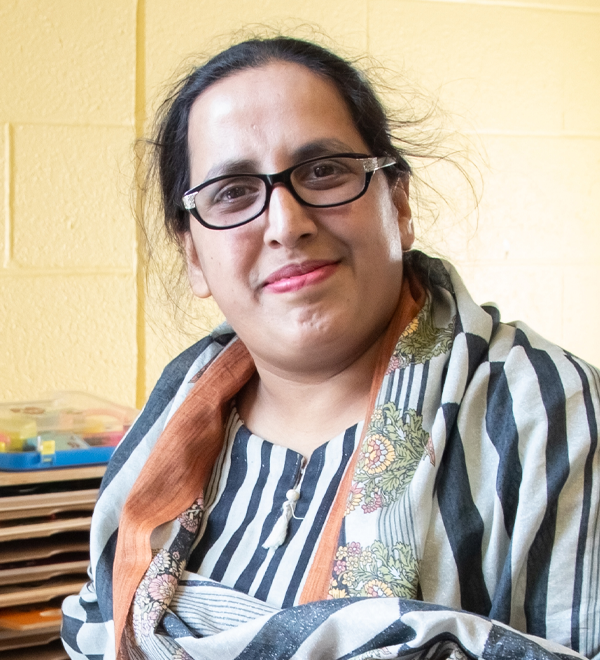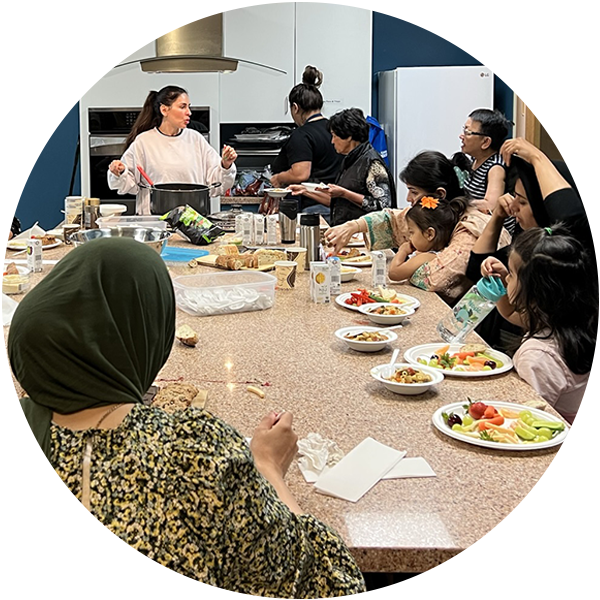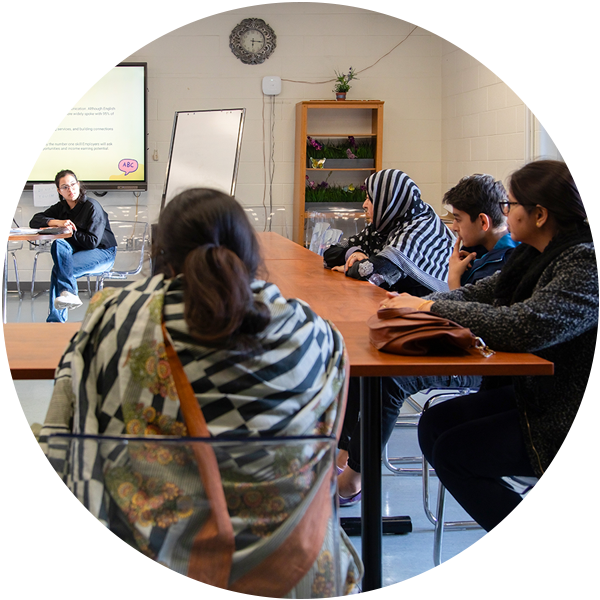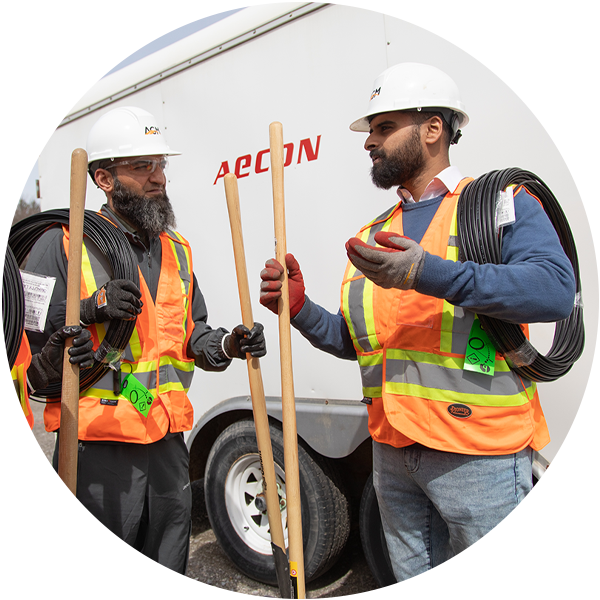Newcomers play a crucial role in the economic, social and civic vitality of the GTA. We’re committed to ensuring they have the support they need to build connections and a bright future in their new home. Any way we can.
THE CHALLENGE
The GTA is Canada’s largest hub for newcomers, yet too many face barriers that hold them back. Discrimination in the housing and job market. Racism. Language barriers. Limited social networks. These challenges don’t just affect newcomers’ well-being — they put people at greater risk of poverty and limit their opportunities to thrive. And when newcomers are excluded, our entire region misses out on the skills and experience they bring. A stronger GTA means that everyone who calls this place home has the chance to succeed. And we’re more determined than ever to make that vision a reality.

4 out of 5
Torontonians will be immigrants or children of immigrants by 2041

67 cents
Immigrants with permanent, full-time work in Toronto earn $0.67 for every dollar their Canadian-born peers make

20%
of newcomers report high levels of depression compared to 14% of non-newcomers
A NEW START SHOULD COME WITH SUPPORT, NOT SETBACKS
We’re making sure newcomers have the support they need by strengthening our network of community agencies and their 49 settlement programs. That means newcomers can access financial literacy and language training, immigration assistance, and employment and housing support as they navigate a new home. We’re safeguarding spaces where newcomers can build connections that combat isolation and support mental well-being. That also means expanding Community Hubs that bring social services under one roof while providing culturally relevant food, job leads and a sense of security. Making our neighbourhoods feel like home for everyone takes collaboration. That’s why we’re rolling up our sleeves with government and community partners to plan for the needs of immigrants and refugees, advocate for solutions and close service gaps. Because when newcomers arrive, they should have every opportunity to thrive.


Shenawar, Client, Rexdale Women’s Centre (a United Way-supported agency)I felt very good about coming to Canada, but for the first two months, life was really hard for me. Whenever we have any problem, I go to Rexdale. They tell me what options are available to me, so I know how to proceed in the future. I got to know staff there from my culture, who speak the same language as me, so I felt comfortable.
BUILDING A GTA FOR ALL
Building community takes community. Together, we have helped:

57,610
newcomers connect with others, the community and needed services

28,059
newcomers access settlement services and wraparound supports

16,719
newcomers acquire knowledge, skills and connections to prepare for the labour market
It’s hard to build a new life in a new place. Together, we will create a GTA where newcomers have the resources and support to embrace meaningful connections and a future where they — and our entire community — can thrive. Any way we can.
Learn more
July 18, 2024
How two sisters navigated their settlement journey
With hard work and a helping hand from a United Way-funded agency, Muffad and Shenawar built new lives in Canada
June 12, 2024
Keeping neighbourhoods affordable
United Way Greater Toronto is partnering on supportive housing initiatives and community land trusts to ensure people stay housed
June 03, 2024
“Everything has to start with a stable home”
A United Way-funded program serving the 2SLGBTQ+ community connected Diana to wraparound support, safe housing and her peers